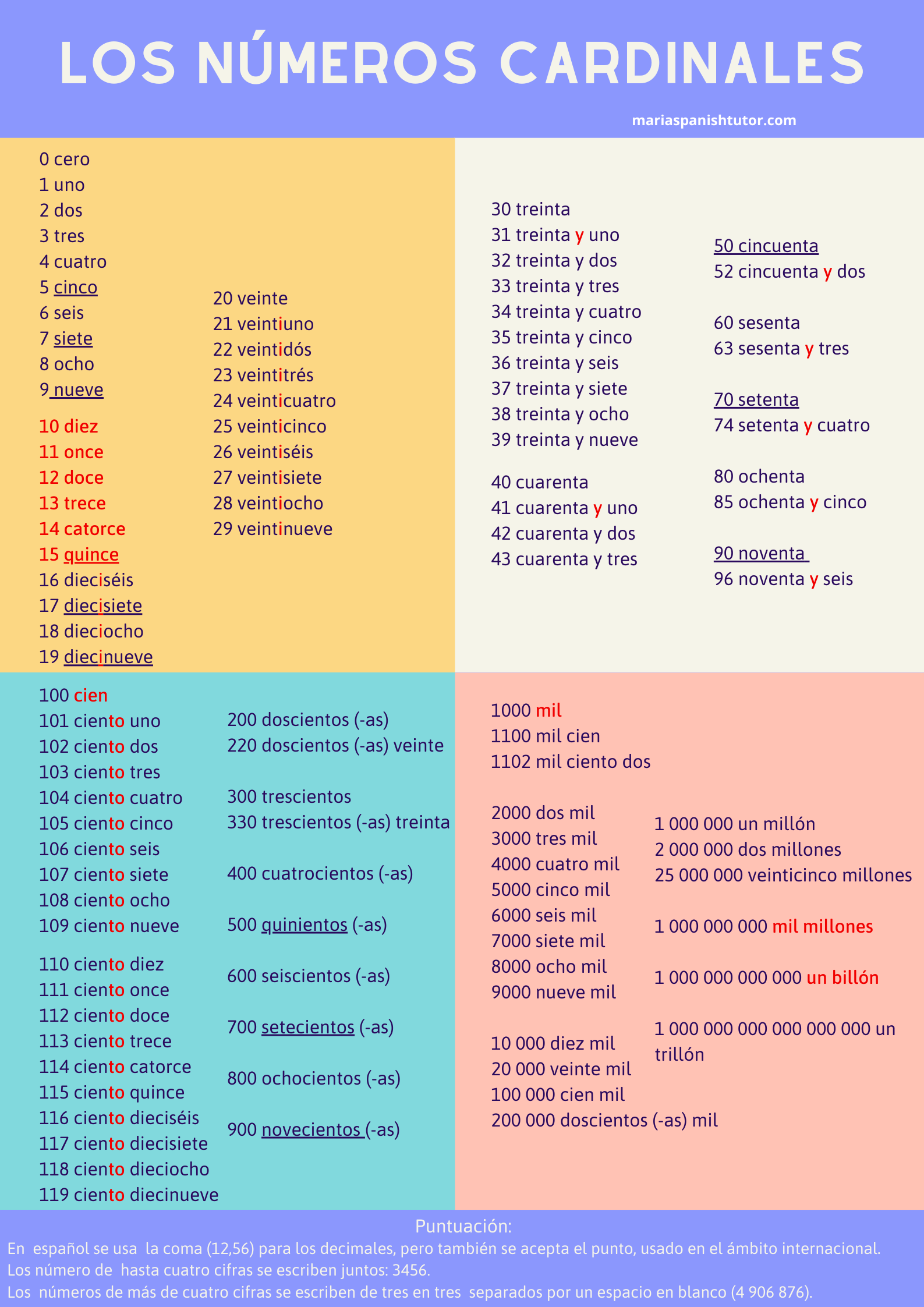In Spanish, numbers from 0 to 15 has each a differentiated name.
After that, in numbers of two figures the name is a combination of the tens and the units, e.g. ‘cuarenta y dos’ (forty and two). More specifically, numbers until 30 are written in a word and after that the numbers containing tens and units will be written in three words, as we can see below.
18 → diez y ocho → diec i ocho (z+y or cy are not possible in Spanish) → dieciocho
25 → veinte y cinco →veint i cinco (we keep the “y/i” and “e” disappears) → veinticinco
67 → sesenta y siete
86 → ochenta y seis
The number 100 in Spanish is ‘cien’. However, each number above that and up to 200 will be written ciento + (two figures number).
100 cien
130 ciento treinta
155 ciento cincuenta y cinco
198 ciento noventa y ocho
Numbers between 200 and 999 can be either masculine or feminine, depending on what are they referring to:
Esta compañía fabrica trescientos tipos diferentes de zapatos.
Este hotel tiene cuatrocientas camas.
In Spanish, we say ‘mil’ (thousand) and not ‘un mil‘ (one thousand). Then, for 2000, 3000, etc, the word ‘mil’ will be always singular. In Spanish we only use the plural form ‘miles‘ when we are taking about thousands of something, e.g. miles de personas.
We do say, though, ‘un millón’ and ‘cuatro millones‘.
Attention:
A billion in English is ‘mil millones’ in Spanish (a thousand millions).
A trillion in English is a ‘billón’ in Spanish.
In Spanish we use the comma with the decimals digits, although the point is also considered acceptable for being used internationally, e.g. 3,567.

